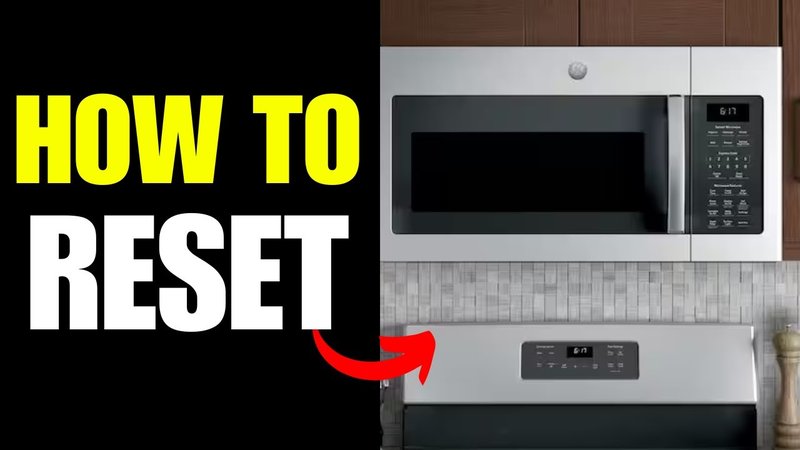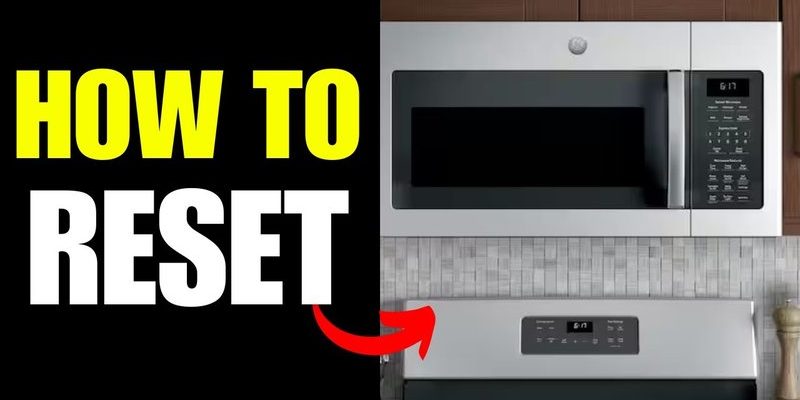
You might be wondering what exactly Error Code F1 means. It’s usually an indicator that the microwave’s touchpad or control panel is malfunctioning. Think of it like your smartphone’s screen freezing—it might be a minor glitch, or it might need a bit of deeper attention. Most of the time, resetting the microwave can fix the issue and get it back to working smoothly. Let’s explore how you can take a crack at resolving this problem, even if you’re a complete beginner.
Understanding Error Code F1
Error Code F1 is essentially your microwave’s SOS signal. It’s a way for the unit to communicate that there’s something wrong with its internal electronics. This could be due to the keypad being stuck or the control board encountering a hiccup. Imagine trying to play a piano, and a key gets stuck; that’s pretty much what’s happening here on a technical level.
Now, you might ask why this happens. There are a few common culprits. Perhaps there was a recent power surge, or maybe there’s a bit of moisture causing issues inside the control panel. Microwaves, like most electronic devices, have sensitive components that can become unresponsive from time to time. It’s a little like when your computer needs a reboot to work properly again after acting slow or freezing up.
But here’s the good news: the solution often doesn’t require tools or specialized knowledge. By performing a simple reset, you can often clear the error code and restore functionality. This option should be your first port of call before considering professional repair services. Let’s delve into how you can perform this reset effectively.
How to Reset Your GE Microwave
So, how do you actually reset your GE microwave? It’s not as daunting as it sounds. Begin by unplugging the microwave from the power source. This step is crucial, as it allows the appliance to fully power down, much like shutting off and restarting your computer. If the plug is hard to reach, you can also turn off the circuit breaker that powers the microwave.
After disconnecting the power, wait for about one to two minutes. This waiting period allows any residual electrical charges within the microwave’s capacitors to dissipate completely. Think of it like giving your device a moment to breathe and clear its head. After this short break, plug the microwave back in or flip the breaker back on.
Upon restoring power, you should see the microwave returning to its default settings, free of any previous error codes. Test the appliance by trying to use it normally. If the F1 code doesn’t reappear, congratulations, you’ve successfully reset your microwave. However, if the error persists, it might be time to consider other solutions or call in professional help.
When to Seek Professional Help
If resetting doesn’t fix the problem, you might be dealing with a more serious issue within the microwave’s internal components. At this point, it may be helpful to consult the user manual or the GE customer service team for further guidance. Much like taking your car to a mechanic, sometimes a trained professional’s touch is what’s needed to get everything back in working order.
In some cases, the control board or keypad might be faulty and in need of replacement. Don’t worry—calling a technician doesn’t necessarily mean a hefty expense. It’s like when you have a minor leak in the sink; sometimes, calling the plumber is the quickest and most effective way to ensure everything is functioning properly.
To avoid future issues, it’s a good idea to ensure the microwave is used within its operational guidelines. Avoid overloading the appliance or blocking the vent while it’s running. Regular cleaning and maintenance can also stave off potential problems before they escalate into significant repairs.
Preventative Measures and Final Thoughts
Think of your microwave as a reliable kitchen companion, and like any good partnership, a little care goes a long way. Keeping the appliance clean, dry, and properly ventilated can prevent many common issues, including error codes like F1. It’s not unlike caring for a pet—routine attention and maintenance can prevent many headaches.
Although encountering an error code might initially cause frustration, it’s essential to remember that these errors are often fixable with simple steps. And while technology might sometimes seem unfathomable, learning to handle these minor repairs can turn you into a more confident and capable household troubleshooter.
In the end, maintaining your microwave can save you time and money. So next time Error Code F1 makes an appearance, you can take a deep breath and tackle it head-on, knowing that you now have the knowledge to reset and restore your kitchen helper to its prime function.
